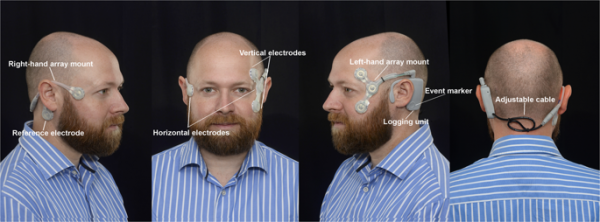An investigation into the diagnostic accuracy, reliability, acceptability and safety of a novel device for Continuous Ambulatory Vestibular Assessment (CAVA) John s. phillips1, Jacob L. Newman2 & stephen J. Cox2

Dizziness is a common condition that is responsible for a significant degree of material morbidity and burden on health services. It is usually episodic and short-lived, so when a patient presents to their clinician, examination is normal. the CAVA (Continuous Ambulatory Vestibular Assessment) device has been developed to provide continuous monitoring of eye-movements, allowing insight into the physiological parameters present during a dizziness attack. This article describes the first clinical investigation into the medical and technical aspects of this new diagnostic system. seventeen healthy subjects wore the device near continuously for up to thirty days, artificially inducing nystagmus on eight occasions. 405 days’ worth of data was captured, comprising around four billion data points. A computer algorithm developed to detect nystagmus demonstrated a sensitivity of 99.1% (95% CI: 95.13% to 99.98%) and a specificity of 98.6% (95% CI: 96.54% to 99.63%). Eighty-two percent of participants wore the device for a minimum of eighty percent of each day. Adverse events were selflimiting and mostly the consequence of skin stripping from the daily replacement of the electrodes. the device was shown to operate effectively as an ambulatory monitor, allowing the reliable detection of artificially induced nystagmus.
Read more: https://www.nature.com/articles/s41598-019-46970-7.pdf
